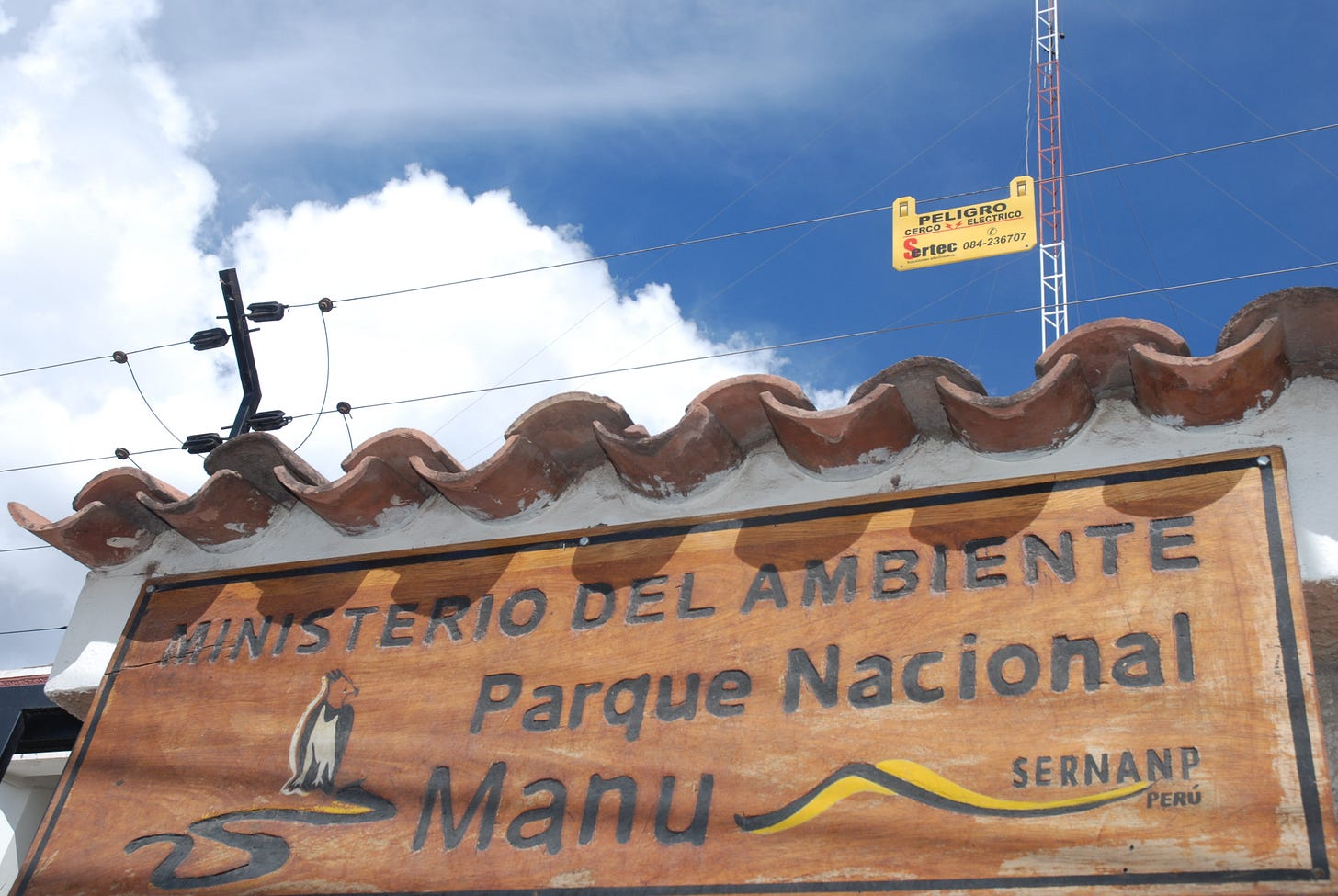One of the world’s most biodiverse places is under threat from energy industry
Manu National Park is just one of many areas across Peru's Amazon potentially facing oil and gas exploration
You wouldn’t know it from the mainstream media, but Peru is currently touting huge swathes of its almost 80 million hectare Amazon rainforest to oil and gas companies. State agency Perupetro has been in cities like London, Houston and Cartagena over the last year or so to talk up 31 “promotional areas” - 25 of which are in the Amazon totalling 10.8 million hectares and overlapping 100s of indigenous communities, two supposedly intangible reserves for indigenous people living in “isolation”, and one so-called “protected natural area” (PNA), as well as the buffer zones of others.
But that’s not all. In addition to those 31 “promotional areas”, Perupetro has been explicit that companies can propose operating elsewhere if they fancy - its policy of “open acreage” - while a bill ostensibly drafted by them and the Energy Ministry aims, as I reported last July, to open up even more PNAs - including national parks - to oil and gas too.
More than 40 Peruvian organisations signed a statement opposing some of Perupetro’s plans in December, but where is the international outcry?
Manu National Park, one of the world’s most biodiverse places as well as a UNESCO World Heritage Site and biosphere reserve, is among the PNAs under threat. Although only one of the 31 “promotional areas”overlaps Manu’s buffer zone - and no part of the park itself - it has been believed for many years that commercially-viable gas deposits lie under it. If Perupetro’s bill was passed into law, it would permit companies to operate there.
Indeed, at a public meeting in Manu province last August, part of a campaign for what is being called the “Cuenca Gasífera de Madre de Dios”, a statement was released saying: “We are aware of the enormous gas riches in Manu province within the Manu National Park and the Amarakaeri National Reserve [sic], both of which are Protected Natural Areas. . . We have agreed to support the proposal to explore for and exploit the gas basin of Madre de Dios which includes Manu province and the necessary areas within the Manu National Park and Amarakaeri National Reserve [sic].”
That statement was signed by Congressman Eduardo Salhuana Cavides - the politician who has been doing the most to promote Madre de Dios’s gas potential - as well as various local mayors, community leaders and other people. It went on to charge Salhuana Cavides with ensuring such gas operations go ahead - including “managing the modification of the Management Plans” for both the Manu park and the Amarakaeri Communal Reserve, as actually it is called.
Given these developments, it seems an appropriate moment to recall how, some years back, I published a series of exposés revealing the ongoing interest of the oil and gas industry in Manu. Three in particular are worth highlighting:
1 An article in The Guardian leaking the existence of a report written by Peruvian consultancy Quartz Services for oil and gas company Pluspetrol, which operates a concession, Lot 88, to the west of Manu, part of which is in the park’s buffer zone. Titled “Research Plan for Geological Exploration and Surface Geochemistry in the Manú National Park and its Buffer Zone”, that report stated: “our mission, as an institution providing specialist technical services to Pluspetrol, will be to contribute not only to the continuation of activities in Lot 88, but also to the development of the Manú National Park protected area [my italics]. Pluspetrol has plans to do geological exploration in the River Maquizapango region and/or its surroundings, an area to the east of the Lot (88) and inside the Manú National Park.”
2 Another article in The Guardian drawing attention to a leaked Pluspetrol map published in a report by Peruvian NGO Ecodess. That map was titled “Geological fieldwork program 2011-Kimaro Manu”: the River Maquizapango was marked on it as one of the two locations the company was interested in. That article also drew attention to a report by another Peruvian NGO, Peru Equidad, which suggested someone had recently been operating inside the park: “continuous helicopter flights towards the Manu headwaters”, chainsaws being used, “long, narrow criss-crossing paths” cleared out of the forest, and possibly cables running in different directions - the latter two sounding a lot seismic testing.
3 An article in Mongabay revealing the existence of an internal, previously not-made-public government report showing that Pluspetrol had diverted from its flight plan during an apparently routine flight regarding operations in Lot 88, and flown so far east that it went beyond the boundaries of its concession and into Manu. According to an aide memoir attached to that report, the company went as far as “4.5 kms into Manu National Park.” Suspicious, huh?

